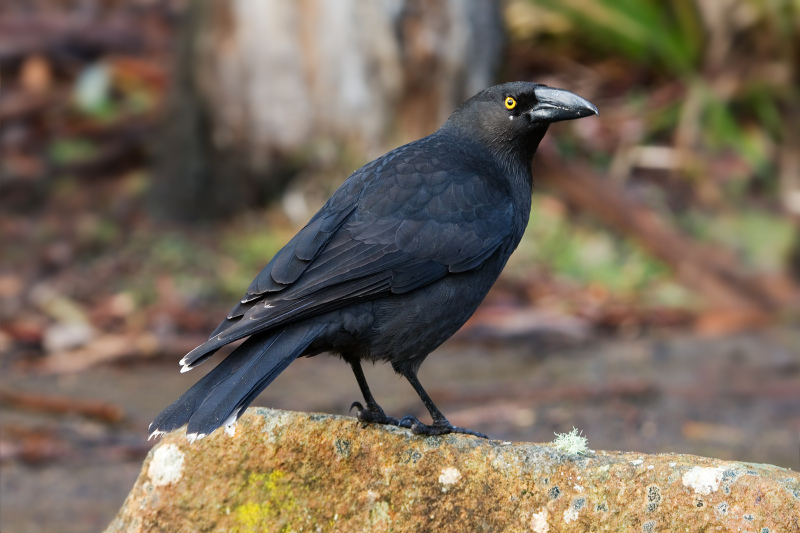Colours
Distinguishing features
The sexes are similar in plumage, which is all black except for white patches at the tips of the wings and tail. The bill and legs are black and the eyes bright yellow. The white tips line the trailing edges of the wings in flight, and a paler arc across the bases of the primary flight feathers is also visible on the underwing.
Although there is no seasonal variation to the plumage, the black may fade a little to a dark brown with wear.
Immature birds have browner-tinged plumage, and a yellow gape until they are two years old. (Wikipedia)
Size
- From 46 cm to 50 cm (Length of specimen)
Wingspan
- Wingspan data is not yet available.
Synonyms
Distribution
Distribution and habitat preferences
The Black Currawong is endemic to Tasmania where it is widespread, although it is uncommon or absent from areas below 200 m altitude. It breeds mainly in the Central Highlands, with scattered records elsewhere in Tasmania. Reports of breeding are rare from the northeast. It is found on many islands of Bass Strait, including the Hunter and Furneaux Groups. It was recorded historically from the Kent Group, but its status there is unknown.
Within its range it is largely sedentary, although some populations at higher altitudes may move to lower altitudes during winter. Flocks have also been recorded making the 20 km long journey across water from Maria Island to the mainland in the morning and returning at nightfall, as well as moving between islands in the Maatsuyker group.
The Black Currawong has expanded into the northeast corner of the island, to Musselroe Bay and Cape Portland. (Wikipedia)
Diet
It is omnivorous, feeding on a wide variety of foodstuffs including insects and small vertebrates, carrion, and berries. (Wikipedia)


